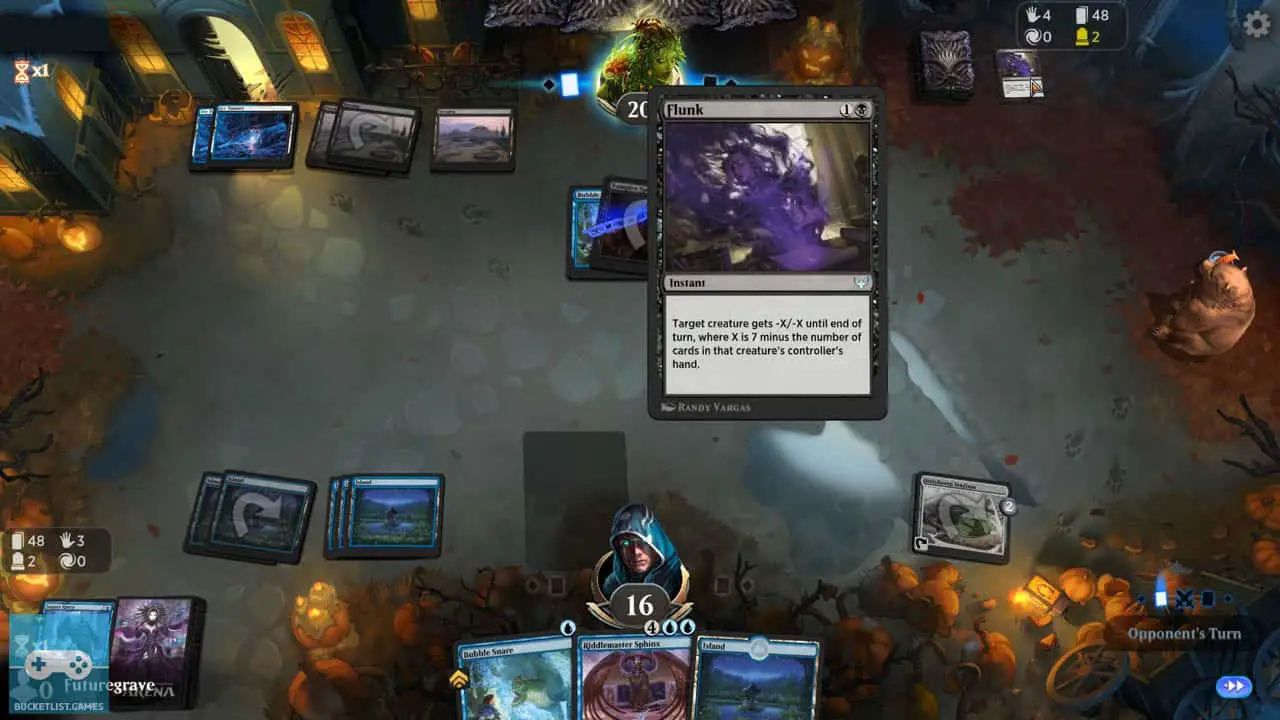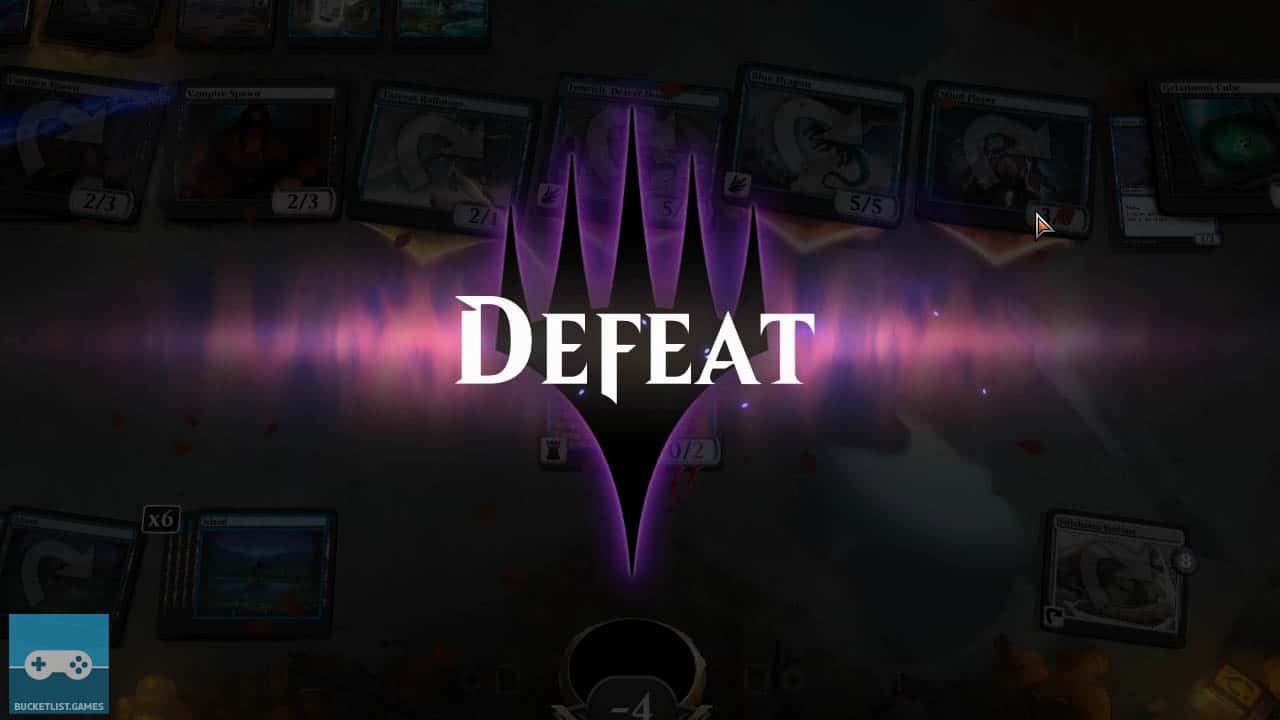
What Is Magic: The Gathering?
Magic: The Gathering is a competitive collectible card game released in 1993, typically between two players who take the roles of wizards that tap into the magic of land and use it to cast spells.
Magic: The Gathering is a competitive card game released in 1993
Players use a wide assortment of spells–from undead creatures and winged angels to giant swords and fireballs–to deal damage and to bring their opponent’s life from 20 to 0.
The game is widely popular and continues to be so 20 years since its release with casual, competitive, streamers, and celebrity players dueling each other in person and online across the globe.
The Premise Of Magic: The Gathering (Explained)
Each Magic: The Gathering player is a Planeswalker, utilizing a deck of cards filled with spells and resources to do battle until one becomes the victor and the other falls in defeat.
- Planeswalkers are named as such due to their ability to cross (walk) from one realm (plane) to another
- Each Magic: The Gathering card set focuses on an exciting plane to explore
Players have access to two types of cards in their decks: lands and spells.
- Lands are resource cards used to “cast” spells
- Spells are cards used to gain a victory over an opponent
Simply put, tapping into the magic properties lands provide (called mana) gives the player the ability to cast spells.
And each land type allows players to cast a specific color of spell.
There are 5 main land types: Plains, Islands, Swamps, Mountains, Forests.
- Plains make white mana with the theme of protection and might
- Islands make blue mana with the theme of illusions and advanced spell work
- Swamps make black mana with the theme of death and necromancy
- Mountains make red mana with the theme of aggression and fire
- Forests make green mana with the theme of growth and creatures
Each type of land provides a different mana color and each color of spell has its own unique feel, properties, and play styles that affect gameplay.
The 5 lands and colors define Magic: The Gathering, which makes each game varied and fresh and has helped Magic remain popular for decades.
How Many Magic Cards Are There?

According to the official Magic: The Gathering Gatherer database of cards, Magic: The Gathering has over 23,500 cards and counting. Three to four card sets release during a calendar year on average, with each card set containing 250 to 300 additional cards.
Magic: The Gathering has over 23,500 cards and counting
This means that players gain access to approximately 750 to 1,200 new cards to play with every 12 months.
This does not even take into account the many unique or special Magic: The Gathering products released periodically that also include new cards.
You can see how the number of Magic: The Gathering cards available can add up over the course of 20 years.
Magic: The Gathering Number Of Cards By Color
- White – 3,600 cards
- Blue – 3,500 cards
- Black – 3,600 cards
- Red – 3,600 cards
- Green – 3,500 cards
- Multicolored – 2,600 cards
- Colorless – 2,200 cards
- Land – 900 cards
Magic: The Gathering Players always have something to look forward to with so many cards in existence and so many new cards released throughout each year.
Why Magic: The Gathering Is A Bucket List Game?
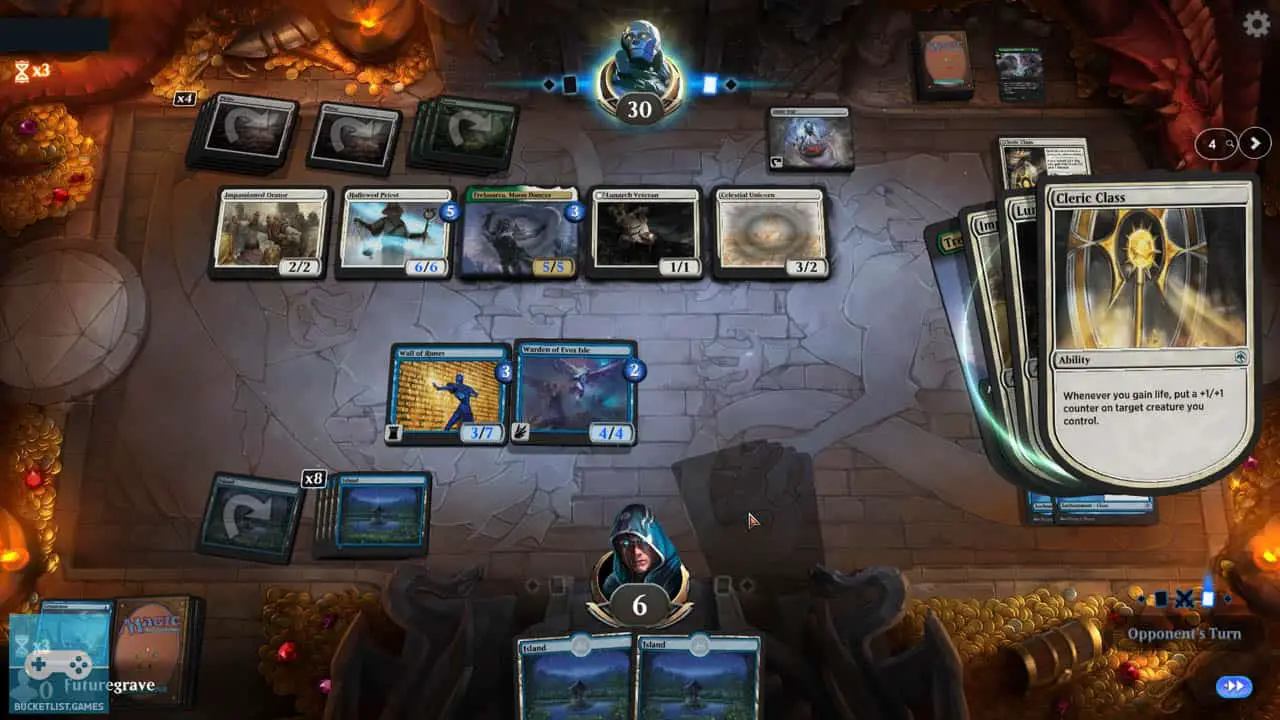
Magic: The Gathering is a fun game everyone must play in their lifetime due to easy-to-understand gameplay with compelling mechanics that allows for freedom and creativity that remains fresh due to an annual release cycle of new cards.
Being an “inviting to all players” strategy game that fosters and rewards creativity is what truly makes Magic: The Gathering one of my favorite games of all time.
1) Magic: The Gathering Is Compelling And Easy-To-Understand
Magic: The Gathering (or Magic for short) is a perfect game for beginner to advanced players due to its easy-to-understand premise and gameplay. The game only has two core components–spells and resources (lands)–in which all gameplay revolves around, making it simple to start playing and enjoy.
a perfect game for beginner to advanced players due to its easy-to-understand premise and gameplay
The game is also very complex with over 20,000 different cards being able to interact with one another with hundreds of cards added every year.
With that said, the core concept of being a wizard in a wizard duel and battling with a deck of cards (made up of spells and the resources to cast those spells) is very easy to follow.
Additionally, most common cards that new players will see and play with are designed to be as easy to understand as possible, with gameplay mechanics that are considered evergreen.
- Evergreen mechanics are ones that are used often and can be included in any Magic card set
Cards created for new or lapsed players makes Magic an easy to play game.
2) Magic: The Gathering Rewards And Fosters Creativity
As a whole, Magic provides players freedom and creativity to express themselves and play however they like. Players are free to build their own deck of cards with whatever cards they like.
Those who enjoy casting fireballs or attacking with an army of goblins may want to play the color red. And those who want to build an army of angelic forces that attack in the air (or gain life to increase their life total) might try playing as the color white.
On the other hand, the color black allows players to control the undead: skeletons, werewolves, zombies, vampires, demons, witches, and creatures of the night. Black is great to simply destroy and corrupt an opponent’s side of the battlefield.
Players are free to build their own deck of cards with whatever cards they like
Magic has you covered with whatever play style or theme you’re looking for, which is why I have enjoyed playing this game for over two decades.
I enjoy making decks, allowing my creativity to flow based on the cards available to me at the time. I’ll often make decks based solely around a creature type, such as vampires only or purely human soldiers. Other times, I’ll build around a gameplay mechanic or multiple cards that work well together to form a combo.
There is no greater feeling than gaining a victory over another player with your very own deck, a deck bred from your creativity and preferences.
The freedom of deck building and being able to make my own deck has kept every single game I’ve ever played fun, fresh, and exciting and is very much a reason I keep coming back to Magic for more.
3) Magic: The Gathering Is An Awesome Strategy Game
Magic is a strategy game built around outplaying the opponent by carefully planning to play cards at certain moments. Being able to know when to not play a card is as beneficial (if not more so) than learning the right moment to play a card.
Every game plays out like a game of chess, each player taking a turn and making moves while the other player reacts to their opponent’s plays.
Should you use one of your human soldiers to block their vampire? Both will perish, but your life total remains protected–a direct hit from an opponent’s creatures will decrease the player’s life total.
Winning matches on your own merits and skills is simply rewarding
Or should you not block, keep your human soldier alive, take the hit from the vampire, and follow up with a retaliation attack on your turn?
Magic provides so many second-to-second and turn-by-turn decisions to ensure no game is ever alike, while leaving the game’s outcomes more on the player’s ability to make calculated decisions rather than luck.
Luck does play a role in deciding Magic winners and losers, but playing strategically is vastly more important throughout the course of an average game. And winning matches on your own merits and skills is simply rewarding.
Magic is a first-of-its kind card game with built-in strategy that has been around for some time and isn’t going anywhere. Interested players need to play this wizard dueling game of decision-making in their lifetime as soon as possible.
- Simple to start, hard to master
- Satisfying gameplay
- Good for casual to competitive players
- Artwork and lore is enjoyable
- Strategic and creative fun
- Very High Replay Value
If you’re interested in checking out the latest Magic: The Gathering cards and products, you can do so by clicking here.
What Do You Need to Begin Playing Magic: The Gathering?
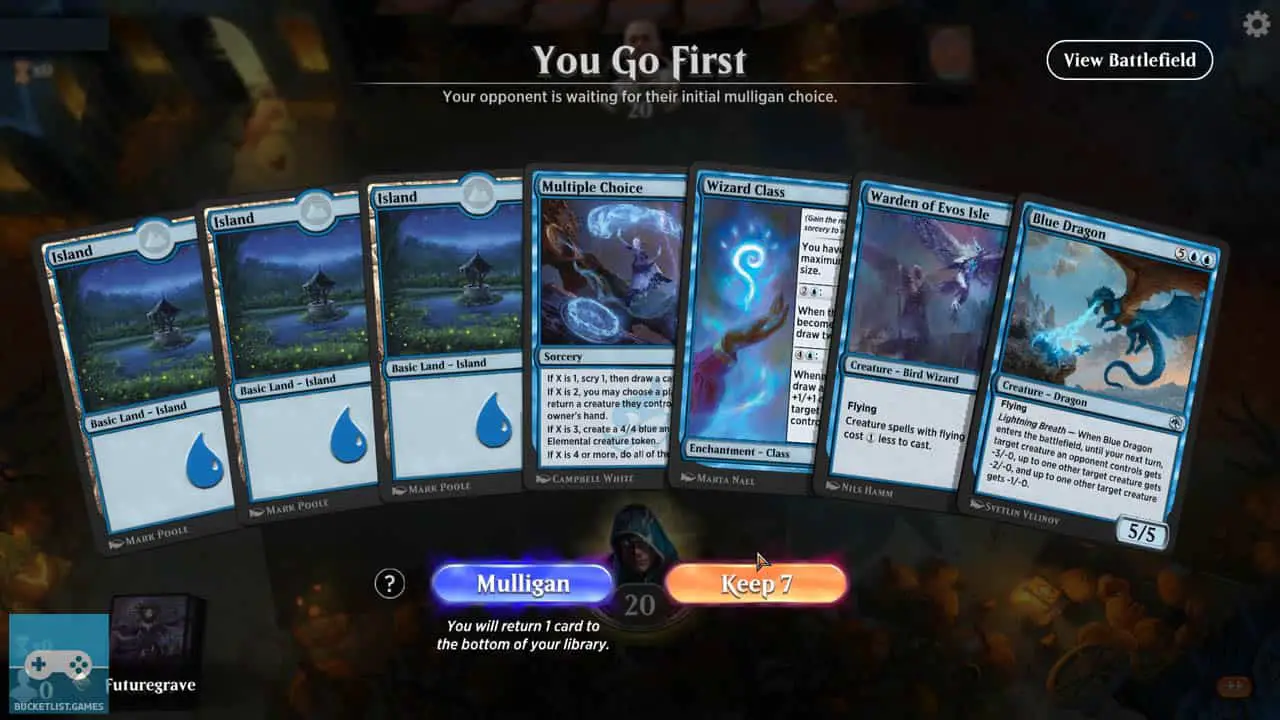
In order to start playing Magic: The Gathering, you will need another player along with two 60 card decks and a method to track life totals. Tokens may also be needed for certain cards. You’ll also need a flat, clear surface to place your cards, such as a tabletop or floor.
Magic requires four things: a person to play with along with 2 decks, a life tracker, tokens, and a flat play area
Let’s take a look at each Magic requirement in a little more detail to help you better understand what you’ll need to play a game.
1) Find A Person To Play With
Get a friend or family member to play with; the normal game of Magic is a 2 player game, after all.
Each player absolutely needs a 60 card deck to play–the deck may have more cards than 60 but no less than that.
Stick to exactly 60 if you’re just starting out.
2) Use Dice, App, Or Paper To Track Your Life Totals
Gather a method to track each player’s life totals. Every player starts out with 20 life points that will decrease and may increase over the course of a game.
I suggest using a smart phone app or dice for life tracking. Pencil and paper works just fine as well.
3) Select Small Objects To Use As Tokens
Then, gather small objects to use as tokens. Some cards need “counters” placed on them. Each counter can be represented by whatever object you like, the smaller the better as many counters may need to be place on a single card.
I suggest using dice. Six sided dice should work just fine and is what myself, my spouse, and my friends use when we are playing.
In fact, we bought ourselves a set of red dice from Amazon that work wonders for tracking card counters.
If you’re interested in a set of basic six sided dice for your Magic playing needs, check out the dice by clicking here.
4) Find A Clear, Flat Surface To Play
You will need a flat and empty area to play cards.
A tabletop works perfectly for a game of Magic but so does the floor or carpeted areas. Keep in mind, dice and counters can easily shift when on surfaces that aren’t flat.
Make sure you interact with anything in-play carefully as to not disturb anything.
In total, playing Magic: The Gathering requires four things: a person to play with along with two decks, a means to track life totals, token counters, and a flat surface to play. You will be able to play as many games as you like once you have acquired these essentials.
Can You Play Magic: The Gathering By Yourself?
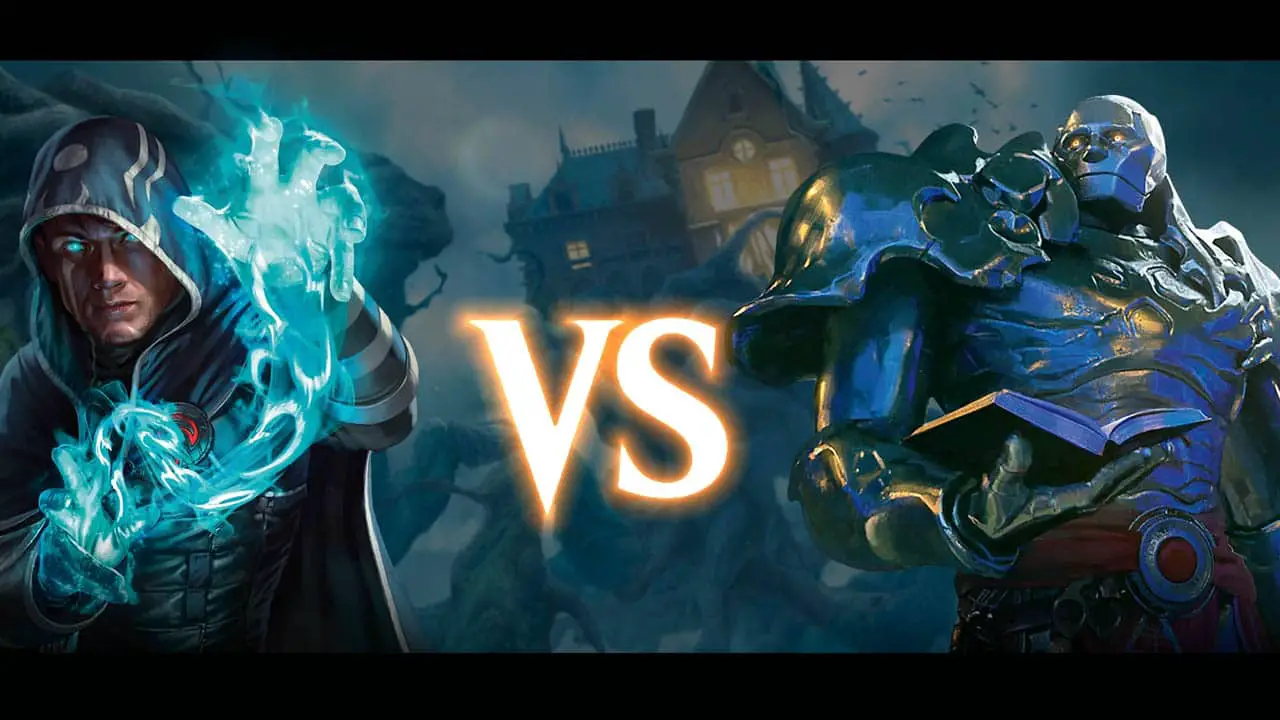
Normally, Magic: The Gathering cannot be played by yourself as it is a 2 or more player game. Multiple people each with a deck of their own is required to play a game of Magic.
Magic cannot be played by yourself as it is a 2 or more player game
But you can play test your own Magic deck by yourself to see how often you draw certain cards and to practice playing turns. Solo play testing is a great way to optimize your deck.
Doing so will help you adjust the ratio of spells to lands (resources) you include by seeing if you draw too little or too many of one or the other.
To play test your deck, simply shuffle your deck and draw your opening hand and play a game of Magic by following the normal rules. Track how much damage you do each turn, which cards you draw, and if ever a turn stalls.
After the game, swap out any cards that you felt were unnecessary or slowing you down.
Repeat the steps for a fun pseudo game of solitaire Magic that is fun in its own right while helping to improve your deck.
Is Magic: The Gathering Hard To Learn?
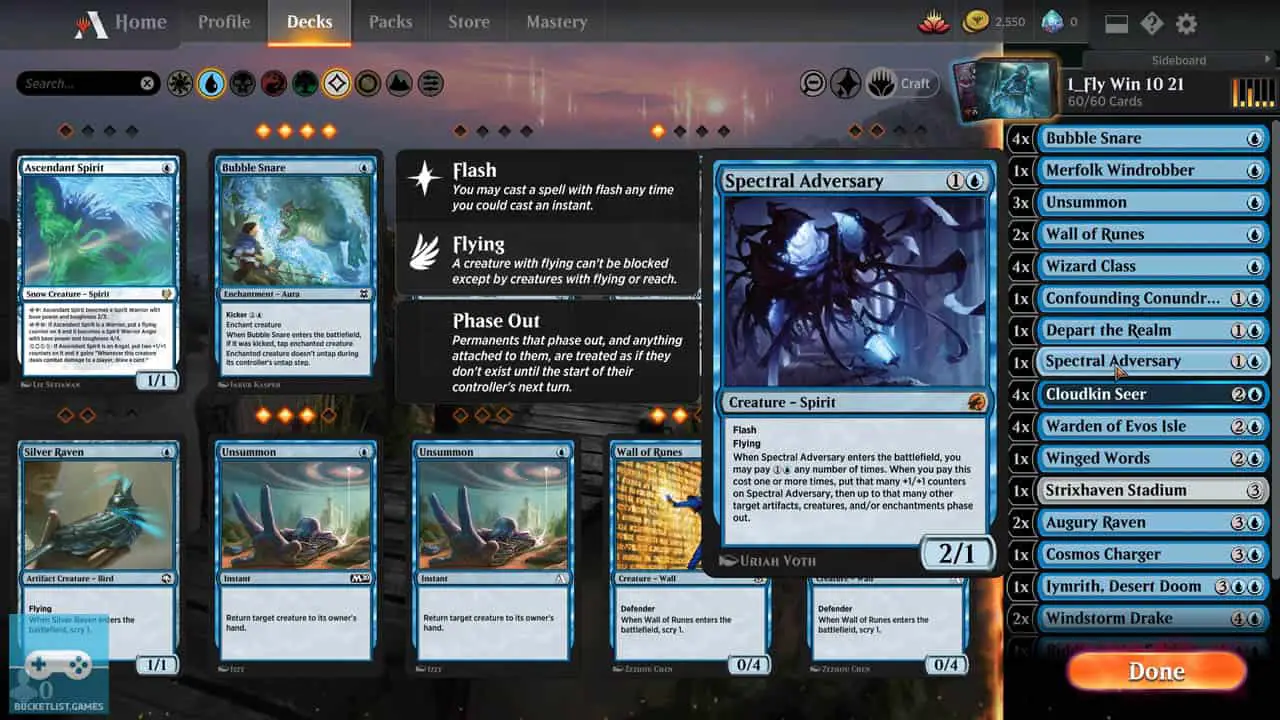
Magic: The Gathering is an easy-to-learn card game that is complex to master. The game consists of just two main card types, spells and lands, but includes thousands of cards and over 120 keyword game mechanics that interact with one another in near infinite possibilities.
Magic is an easy-to-learn card game that is complex to master
Additionally, each card has its own unique characteristics with some geared towards expert players by having gameplay mechanics that contradict and supersede normal play rules.
This makes card interactions over the course of a game particularly challenging to comprehend when more and more unique cards are played.
Always remember that the basis of Magic is simple when matters get too complicated: tap into the inherit magic inside of lands to pay for and cast spells to defeat your opponent.
Take turns slow, read each card thrice, and quadruple check what you want to do before playing a card. Doing so will help you manage complex moments while giving you experience to navigate them in future games.
How Long Do Magic: The Gathering Games Last?
Overall, a game of Magic: The Gathering lasts between 5 and 15 minutes. Matches can be shorter or longer depending on what cards are drawn; matches can also end at anytime if a player concedes. A play group or tournament may also specify a time limit to prevent matches from going too long.
On average, Magic games lasts between 5 and 15 minutes
The average game of Magic lasts 8.45 minutes, which isn’t too long nor is it too short for a match to last.
This play time is based on my personal match history in which I played dozens of matches with various opponents of all deck types.
Sample List Of Magic Match Play Times (In Minutes)
7, 9, 11, 6, 13, 8, 15, 10, 9, 7, 5, 9, 8, 13, 5, 7, 6, 9, 8, 5, 5, 11
My shortest match lasted 5 minutes while my longest went 15. My shorter matches were due to my opponent playing stronger cards faster than I could or vice versa.
The matches that went the longest were typically back-and-forth affairs in which both of us were able to play cards and have a more interactive duel.
Of course, match length will also be decided by the skill of each player as well as the level of understanding the player has with the deck.
A more advanced player familiar with a deck may be able to finish a match faster than a lower skilled player with an unfamiliar deck.
Magic match matches vary in length but are always fun to play.
Is Playing Magic: The Gathering Expensive?
Playing Magic: The Gathering is a moderately expensive hobby with the average player spending approximately $600 per year. Active players will at least buy one booster box of each new set released during a year which is between $360 and $480 total plus essential supplies.
The average magic player spends $600 per year
No cards are ever guaranteed because booster packs are randomized which encourages players to spend more to get the cards they need.
Due to the randomization, Magic players tend to buy multiple booster boxes and packs of each set, drastically increasing the average cost of playing from $600 to well over $1,000 annually.
I wrote a detailed article about how expensive Magic: The Gathering is to play, how much it costs to start playing, as well as the price of additional costs such as supplies. I also go over ways to play Magic as inexpensive as possible.
You can read this thorough article by clicking here.
Where Can You Play Magic: The Gathering?
There are three main places where Magic: The Gathering can be played: at home, event locations, and online. Play Magic at home for a more relaxed, casual session or go to local stores for a more structured play environment. Online play provides a mix of both with an emphasis on competitive matches.
Magic can be played at home, at event locations, and online
Let’s take a look at the pros and cons of playing Magic in various environments.
Play Magic At Home
Playing Magic at home is my favorite way to play the card game. Home play provides a relaxed environment without time limits to learn how to play the game better.
You can go at your own pace, make mistakes, and even undo bad card plays. I have said “oops, I didn’t mean to do that” after playing a card hundreds of times against my friends and spouse.
And we simply allow each other to undo our mistakes and learn from them.
But, playing Magic at home can be too relaxed. It’s easy to get very comfortable playing with “house rules” when official Magic goes by a more structured rule set.
There are no do-overs, “oops” moments, or infinite time limits when playing outside the house. There’s also a lot more deck variety and pool of cards being used when dueling people at stores or online.
Overall, playing Magic at home is still the best way to start playing the game or to play as a pastime for casual-competitive fun.
PROS:
- Easier to learn
- Relaxed environment
- Go at your own pace
- Make mistakes, redo turns, undo actions
- Play how you want to play
CONS:
- Too comfortable of an environment
- Lack of deck variety to play against
Play Magic At Stores
Playing Magic at event locations is a fantastic way to delve into official Magic. Event play provides structured card matches that follow the game’s rules which helps players better understand how the game is played.
Meeting other players is also a perk of going to local stores to play. Magic is called “The Gathering” for a reason and socializing with new to advanced players is part of the fun.
It’s great to see what other decks people are using, perhaps even seeing various interesting cards for the first time, while also taking note of strategies used against you. Playing other people makes you a better player.
Not only that, life-long friendships can be formed by visiting local stores and play group locations. You never know who you will meet and perhaps form a personal bond over a game of Magic.
Event locations also are great way to test your deck against a variety of other decks, play various Magic formats you usually don’t play at home, and even gain access to new cards before they’re released.
Keep in mind that gaming at events such as local hobby shops is going to feel more intense. People will be expected to play by the rules.
Players are usually understanding and patient from my experience, but up only up until a point. A match is competition with a winner and loser so allowing undos and allowing miss-players aren’t going to be as common as at home.
Overall, playing Magic at event locations is still the best way to meet other players and learn the official rules of Magic in a structured environment.
PROS:
- Meet other Magic players
- Get access to pre-release products
- Get to understand Magic’s rules better
- Try out decks against a variety of players
- Play various Magic formats
CONS:
- Faster-paced environment
- More structured
- Social interaction with strangers
Play Magic Online
Playing Magic online is just as fun as playing the game at home and combines the perks of home play and store play. Online Magic provides both causal and competitive game modes that utilizes official rules.
There are 2 main online Magic games: Magic The Gathering Online known as MTGO and Magic: The Gathering Arena known as MTG Arena.
MTGO released in 2002 and is a faithful recreation of the tabletop game whereas MTG Arena launched in 2019 and was built for streaming, watching, and playing. Both are free to download and provide digital Magic matches.
I personally play a lot of MTG Arena as does most professional and casual players.
Digital Magic is a great way to play against other players, try out new decks against computer opponents, see new card sets when they launch, and try out a variety of formats.
There really isn’t a downside to playing Magic online.
You get the same great card game without needing physical decks, another person to play with, storage for your cards that take up space, along with all the other “burdens” of playing the physical version.
Digital Magic allows you to play whenever you want just for the fun of it. And it’s a lot of fun!
PROS:
- Free to start
- Casual and competitive Magic
- Play against real people
- Practice decks against the computer
- Play in a variety of match types
CONS:
- Your collection is digital
- Internet connection is required
Is Magic: The Gathering Dying?
Magic: The Gathering is not dying and is still thriving nearly 30 years after release with approximately 20 to 35 million active players and over 10 billion games of Magic played on an annual basis.
More people are now playing the popular fantasy card game than ever before in part due to the 2019 release of Magic: The Gathering Arena, a modern digital version of the game.
Magic: The Gathering is not dying and is still thriving nearly 30 years after release
According to the head designer of Magic, Mark Rosewater, the second quarter of 2019 was the best period ever for Magic financially with a great surge in player growth. The card game will make even more money the following year.
Hasbro (Magic’s parent company) reported their 2020 financial results in February 2021 with Magic being their primary brand earner. 2020 was Magic’s best financial year in its history, earning over $580 million dollars (source).
And the Magic brand continues to get bigger in 2022 and beyond.
Magic: The Gathering’s official YouTube Channel has over 500,000 subscribers and growing with the Magic 2020 World Championship XXVI Finals video racking over 600,000 views.
The game is played by both causal and competitive players across an array of formats that are as equally enjoyable to play and to watch.
Official Magic: The Gathering Synopsis
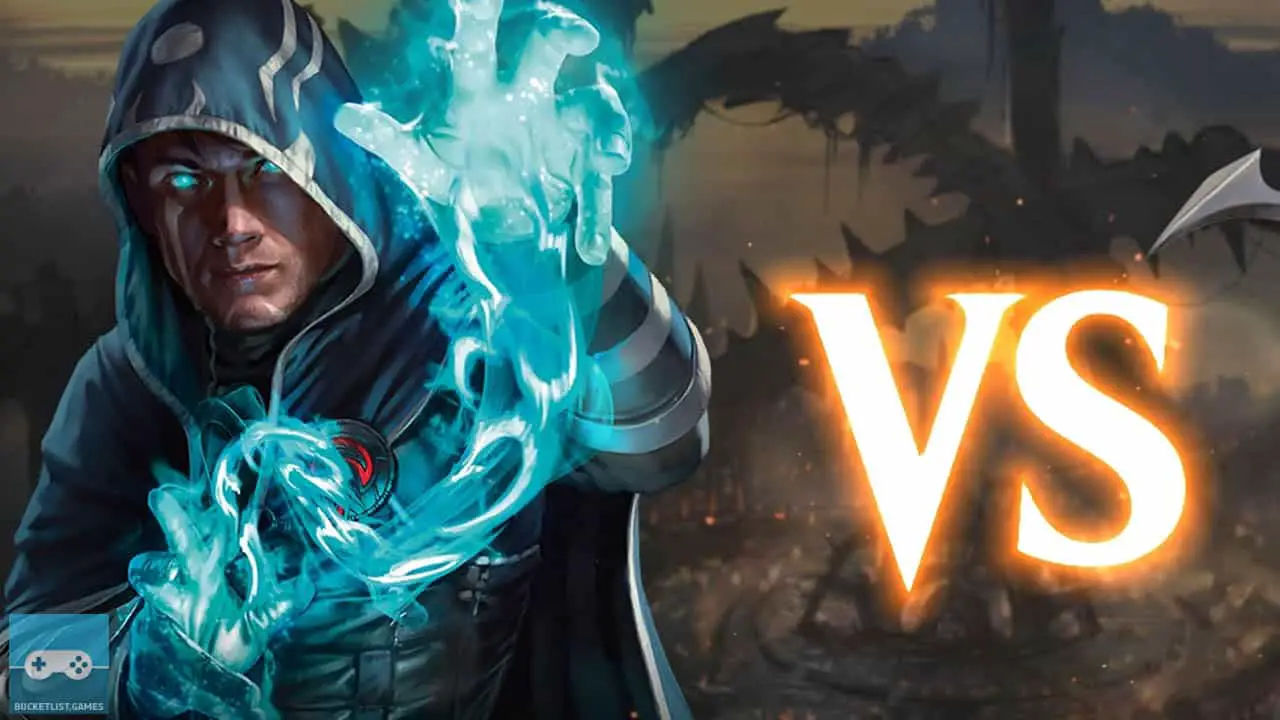
Synopsis:
“In the Magic game, you play the role of a planeswalker—a powerful wizard who fights other planeswalkers for glory, knowledge, and conquest. Your deck of cards represents all the weapons in your arsenal. It contains the spells you know and the creatures you can summon to fight for you.”
Visit the official Magic: The Gathering website for more information


